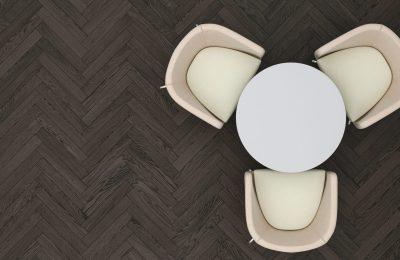In the spa industry, hiring the right employee always benefits owners By Brooke SmithFor employers, hiring a qualified employee can…
A New Mindset Emerges in the Age of COVID-19
The global pandemic has been a tremendous wakeup call for the world and has ignited a sweeping shift in the spa and wellness industry. As we navigate this “new normal,” it is undeniable that we’ve entered uncharted territory in which we must reassess our industry and redesign our practices. Our world has changed and our mindset needs to change, too, if we are going to survive.
Despite the uncertainty, there are some things we know for sure.
The cataclysmic rise in the number of COVID-19 cases is shining a light on the crucial importance of health and illness prevention, aspects which have now taken centre stage as key value propositions for consumers. Owners, operators, investors, developers and other hospitality industry stakeholders are actively taking a serious look at incorporating health and wellness into their businesses. Spa and wellness programs are now positioned to complete the perfect trifecta – joining room accommodation and food and restaurant services – as the three dominant revenue streams in the hotel and hospitality industry. It’s probably one of the greatest successes emerging from these difficult times.
A transparent operational and experiential overhaul of existing health and wellness programs is an absolute prerequisite now. It’s no longer a “nice to have;” it’s a “need to have.” That entire paradigm has been turned on its head. Quite frankly, businesses that don’t have a clearly defined and personalized brand position around health and well-being, paired with renewed commitments to their team and guests, are setting themselves up for failure.
Another shift in thinking in which we’ve made great strides in the past decade is that we are moving toward a more proactive mindset, where illness prevention becomes a focus. For a long time, the Western world had been caught in a reactive medical model, treating those who were sick. Now, however, we’ve seen a change in that thinking; it’s a paradigm shift that places prevention front and centre, long before any signs of illness appear.
Consumer demand for programs that contribute to health and illness prevention will lead to greater saturation and fiercer competition in the marketplace, driving innovation, better-quality products and high-performance teams equipped to win customer loyalty and rise above the competition. As a result, most likely, the industry will deliver a much more superior experience to what has been. It’s a very exciting time, but it has also been a very challenging time and there are no shortcuts.
So where is all of this going?
Collaboration across sectors and industries becomes essential; it is critical that we work together and learn from each other. There are tremendous opportunities for different businesses and brands to form stronger alliances and partnerships; for example, I believe we will see a deeper connection and integration between Eastern and Western medicine. We’ve danced around this for a long time, but I think you will see clinics where Eastern and Western doctors will be working more closely together to overlap their skills and services.
Consumer demand for scientifically backed services will lead to greater fusion of ancient practices and healing traditions with modern technology. It’s a huge area of opportunity and growth potential.
After months of self-isolation, there is a deep desire to connect with others in meaningful ways. Consumers will look first to brands they trust that have taken a clear stance on what health and well-being means to them in this new world. Mind-body programs such as yoga that promote social well-being are ideal for this, yet will require a revised approach to guarantee the safety of guests.
Wellness beyond the spa and outside of the built environment will be essential. Taking services and programming outdoors enables guests to maintain safe social distancing practices while still enjoying enriching programming. There is great opportunity for innovation here in both urban and resort locations.
Another dramatic shift that’s driving the industry is social distancing and its impact on consumer loyalty. Those valuable client relationships don’t start and end in the treatment rooms, especially now that things have changed so drastically. We have to look at what is happening outside of that experience, at what happens before your client arrives and after they depart. We’re forced now as operators to find ways to dial up and maintain stronger relationships with our customers when they’re not in our physical presence.
There needs to be a tremendous amount of innovation in terms of what’s happening with that consumer, what you need to do to win their loyalty and keep them returning long after this pandemic disappears. How are you staying connected to those guests now?
We’re seeing more virtual connectivity and opportunities for new revenue – obvious ones like online services and programming, scheduling and social media, virtual consultation and e-commerce, but where can we go beyond that? How do we innovate around that 360-degree journey that exists when those consumers are not in your physical business? And again, not only will this mindset strengthen the experience and the overall value for the consumer, but it should boost the revenue potential for the owner and for the operator, as well.
In building those crucial relationships, it’s important to understand consumer psychographics. Look at your client’s mindset – what drives them, what are their needs and interests? But also consider the demographics; for example, age is a factor in mobile communication and in the preferred types of services and programming. Are we doing enough to meet the needs of an older population that is living longer, and are we helping them maintain their health and well-being? Without question, there’s tremendous opportunity and, I would argue, urgent need to cater to that older demographic.
For the longest time, wellness was solely connected to the luxury market, for those with disposable income and greater means; but that left a large portion of the market untapped. If we think about it differently, it can be packaged and sold in a way that may make it more accessible to the mainstream.
Thinking differently is what it’s all about.




